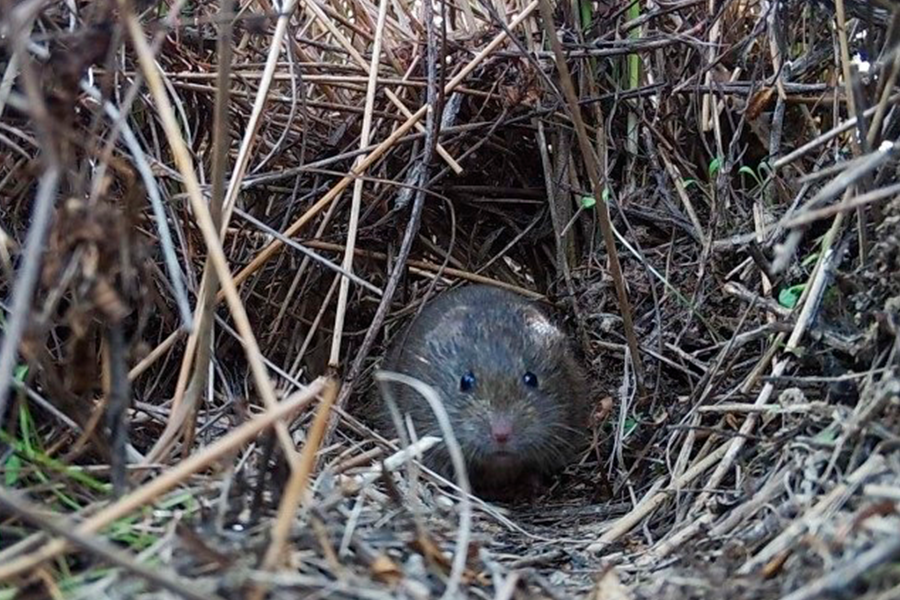Iberdrola España and EMAT promote study confirming the increase of the Cabrera vole in the Ceclavín solar plant
- A field study has confirmed the presence of Cabrera's vole (Iberomys cabrerae) at the photovoltaic plant in Ceclavín.
- The population and its habitat have improved considerably after the installation.

Iberdrola España, together with EMAT (Estudios Medioambientales y Territoriales), began a field study in September 2022, lasting almost a year, on the presence of the Cabrera vole at the Ceclavín photovoltaic plant, with the aim of characterising the potential habitat area of the vole, its correct restoration and the colonisation of the populations of this species in these habitat patches.
The work was completed at the end of June with a very positive result. It reveals that the areas with presence of the species have increased notably, going from 4 and 7 located in the previous studies to 17 (out of a total of 19 areas that were marked as potential habitat as they fit the characteristics required by the species).
For Alfredo Ortega, EMAT biologist, "the results obtained from the field work at the Ceclavín PV plant have exceeded all initial expectations and have confirmed not only an expansion and improvement in the habitat used by the Cabrera vole, but also the presence of the species in practically all the potential vegetation patches present within the energy infrastructure, with really important densities".
For Jorge Romero, from Iberdrola Renovables' environmental team, "Iberdrola España has been working for years on a multitude of lines and projects to promote environmental, social and territorial coexistence, all integrated in the Convive Programme".
According to the Red Book of Spanish Terrestrial Mammals, the Cabrera vole is a species endemic to the Iberian Peninsula with a limited area of occupation and presence. Moreover, the monitoring of its populations reveals that in the last decade it has been reduced, showing a clearly regressive trend.
The potential habitats have improved in quality compared to the state prior to the construction of the facility. This land is now free of pesticides and chemical elements that can affect the population of this rodent and it finds a comfortable ecological niche that also attracts other predatory species such as birds of prey.
Detectability (time to find signs of recent presence) has been categorised as high or very high in all areas of presence, due to the fact that populations are very abundant, which is not usually the case.
Photo-trapping has produced good quality images of voles in all areas of occurrence. As this species is categorised as vulnerable by the International Union for Conservation of Nature (IUCN), obtaining these images, as well as the results of this study, have a high scientific value.
Preliminary estimates lead experts to believe that the population of Cabrera's vole at the Ceclavín photovoltaic plant is very significant and could be one of the largest known.
